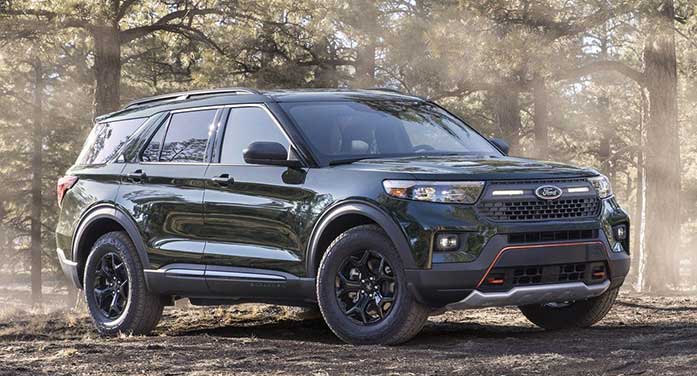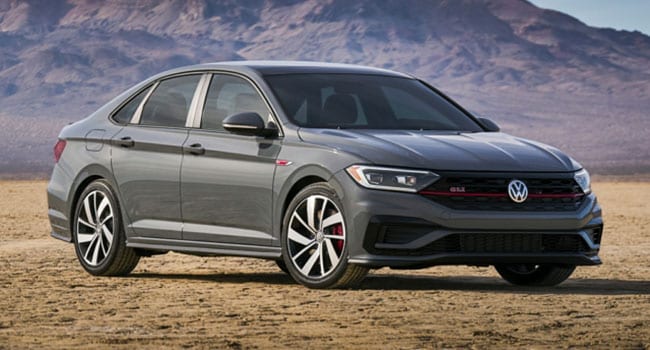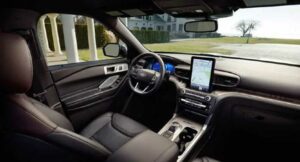
There’s all kinds of elbow room in this vehicle, and it has massive proportions. If you want to pop the hood, you better be a basketball player because the Explorer stands so tall that you literally can’t reach inside the engine bay
 With the price of gas hovering around the two bucks a litre mark in most of the country, does it make sense to buy one of the more gas-thirsty vehicles on the market?
With the price of gas hovering around the two bucks a litre mark in most of the country, does it make sense to buy one of the more gas-thirsty vehicles on the market?
I’m talking about full and mid-size SUVs models like – oh – the Toyota Sequoia, Chev Suburban, Jeep Wagoneer, and so on. Most of these behemoths can seat up to seven adults and are usually built on a pickup truck platform, with all that goes with it.
Right near the head of the pack is the Ford Explorer, which comes in six variations. Somewhere in the middle is the Timberline version, which is what I drove this time around. It’s offered with three engine choices: “Eco-Boost” turbocharged four-cylinder, Eco-Boost twin-turbo V6, and a hybrid model that has a naturally aspirated V6. I drove the twin-turbo V6.
Before I get into it, front and centre: this is a huge vehicle. It’ll easily seat seven, and the interior storage capacity is 2132 litres (75.2 cu. ft.) behind the first-row seats. Yes, this is slightly less than the Honda Pilot (2350 litres), but there is still all kinds of elbow room in this vehicle, and it has massive proportions. For example, if you decided you want to pop the hood and have a look round to check the oil and whatnot, you better be a basketball player because the Explorer stands so tall that you literally can’t reach inside the engine bay.
|
Related Stories |

|
| Jetta GLI is a subdued masterpiece
|
| Genesis GV60 an innovative all-electric crossover
|
| Buying used: Kia Sportage revived in 2012 to mixed results
|
Moving on, the powertrain in this vehicle is a marvel of engineering, in my opinion. The V6 displaces just three litres but bangs out 400 horsepower in a completely civilized way. Reserve and passing power on the highway is more than ample, yet during around-town driving, the drivetrain is docile, well-behaved, and almost entirely silent in operation.
I especially like this part: at 100 km/h, the engine is ticking over at just 1500 rpm: that’s barely above idling speed. A 10-speed automatic is standard equipment and you can run the Explorer in 2WD or 4WD by simply turning a console-mounted rotary dial. It will easily haul a trailer up to 2,540 kg. (5,600 lb). Combined fuel economy is set at 10.3 L/100 km, so the Explorer Timberline offers unexceptional fuel economy and is pretty much in keeping with most other full and mid-size SUVs.
Here’s the thing about this vehicle that really really annoyed me: it has atrocious controls and switchgear for interior accessories and amenities. Pretty much everything – heat/ventilation, sound system, etc. – is done via a centre touch screen, which would be fine, except it all requires three or four steps, and nothing is instantly accessible.

Pretty much everything is done via a centre touch screen, which all requires three or four steps, and nothing is instantly accessible
Furthermore, while underway, with the vehicle bouncing along – it is a truck, after all – it’s difficult to hit the control accurately you’re looking for. You try to get to the seat heat/ventilation controls, for example, but the setting is a touch slide affair and you end up getting a different fan speed or temperature setting than what you wanted.
Inevitably, you must take your eyes off the road and focus on the damn thing to get the right setting. This is dangerous, poorly conceived, and a deal-breaker for me. I don’t think I would ever get used to this situation, and it ruins an otherwise pleasant driving experience. Ford isn’t the only culprit here; carmakers right now seem to be going through a phase where they try to make interior controls and switchgear as cryptic and user-unfriendly as possible. Time to get back to basics.
If you can get past that, however, the Explorer Timberline is as much a limo as it is an SUV. This is a people-carrier par excellence and is amazingly quiet on the highway. I’m hard pressed to think of another vehicle that would be better on a road trip, just as long as you don’t have to use the interior controls.
Base Price: $55,759
Engine: 3.0 litre twin-turbocharged V6
Transmission: Ten-speed automatic
Drive: RWD/4WD
Horsepower: 400 hp @ 5500 rpm
Torque: 415 ft. lb. @ 3500 rpm
Fuel Economy: 12.2 L /100 km (city) & 10.5 (hwy.) Regular gas
Some Alternatives: Honda Pilot, Nissan Armada, Hyundai Palisade, Chevrolet Suburban, Chev Tahoe, Cadillac Escalade, Volvo XC90, Jeep Grand Wagoneer, Lincoln Navigator, Toyota Sequoia, GMC Yukon, Kia Telluride.
Ted Laturnus has been an automotive journalist since 1976. He was named Canadian Automobile Journalist of the Year twice and is past president of the Automobile Journalists Association of Canada (AJAC).
For interview requests, click here.
The opinions expressed by our columnists and contributors are theirs alone and do not inherently or expressly reflect the views of our publication.
© Troy Media
Troy Media is an editorial content provider to media outlets and its own hosted community news outlets across Canada.


